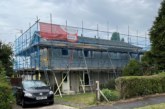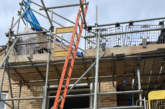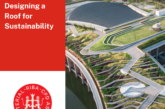The Commons Environmental Audit Committee Chairman, Philip Dunne MP, has highlighted the need for ministers to address the need to reduce the number of buildings being knocked down amid climate change concerns. The MP has said that current buildings hold a significant amount of locked-in carbon, which is wasted when they are knocked down and new carbon-intensive materials are then used to rebuild.
Instead, retrofitting existing buildings to make them functional for new purposes should take priority. The Commons Committee also wants to see developers calculating emissions over the entire lifetime of their buildings. Technology is available to support this, significantly reducing environmental impact by improving energy management in buildings and extending their lifetimes.
 Giulia Barbano, R&D Senior Project Manager at IES, said: “According to the UK Green Building Council, 80% of buildings that will exist by 2050 have already been built, so decarbonising the existing stock needs to be a major priority. Currently, in Europe, renovation rates stand at about 1%, largely because renovation is an uncertain investment — there are high upfront costs involved and the end energy and cost savings are usually only ballpark figures.
Giulia Barbano, R&D Senior Project Manager at IES, said: “According to the UK Green Building Council, 80% of buildings that will exist by 2050 have already been built, so decarbonising the existing stock needs to be a major priority. Currently, in Europe, renovation rates stand at about 1%, largely because renovation is an uncertain investment — there are high upfront costs involved and the end energy and cost savings are usually only ballpark figures.
“However, with the advancement of technology supporting sustainability in the built sector, this can be changed. Instead of looking at an old building, perhaps built in a time when documentation wasn’t so regulated and making assumptions on its performance, technology can be used in retrofitting to enable accurate performance measurement and remove the need for assumptions.
“Digital Twins represent accurate models of buildings and use physics-based simulations, together with real data, artificial intelligence and machine learning to behave exactly like their real-world counterparts. Digital Twins can then be used to test different design options on a virtual version of a building, make better, data-driven decisions and accurately assess return on investment.
“Digital Twins that have been created for existing buildings reveal how they need to be retrofitted to bring them in line with net zero targets by assessing which upgrades need to be implemented, such as new windows, better insulation, renewables integration and HVAC system upgrades, and which of these options will have the greatest impact.
“This has the overall result of extending a building’s life, minimising the need for demolition and the production of new materials, and ensuring that the buildings are operating with optimised energy use. Construction has a huge impact on the environment and firms need to make technology central in their strategies to promote sustainability.”
Header image ©Jackie Niam/AdobeStock









